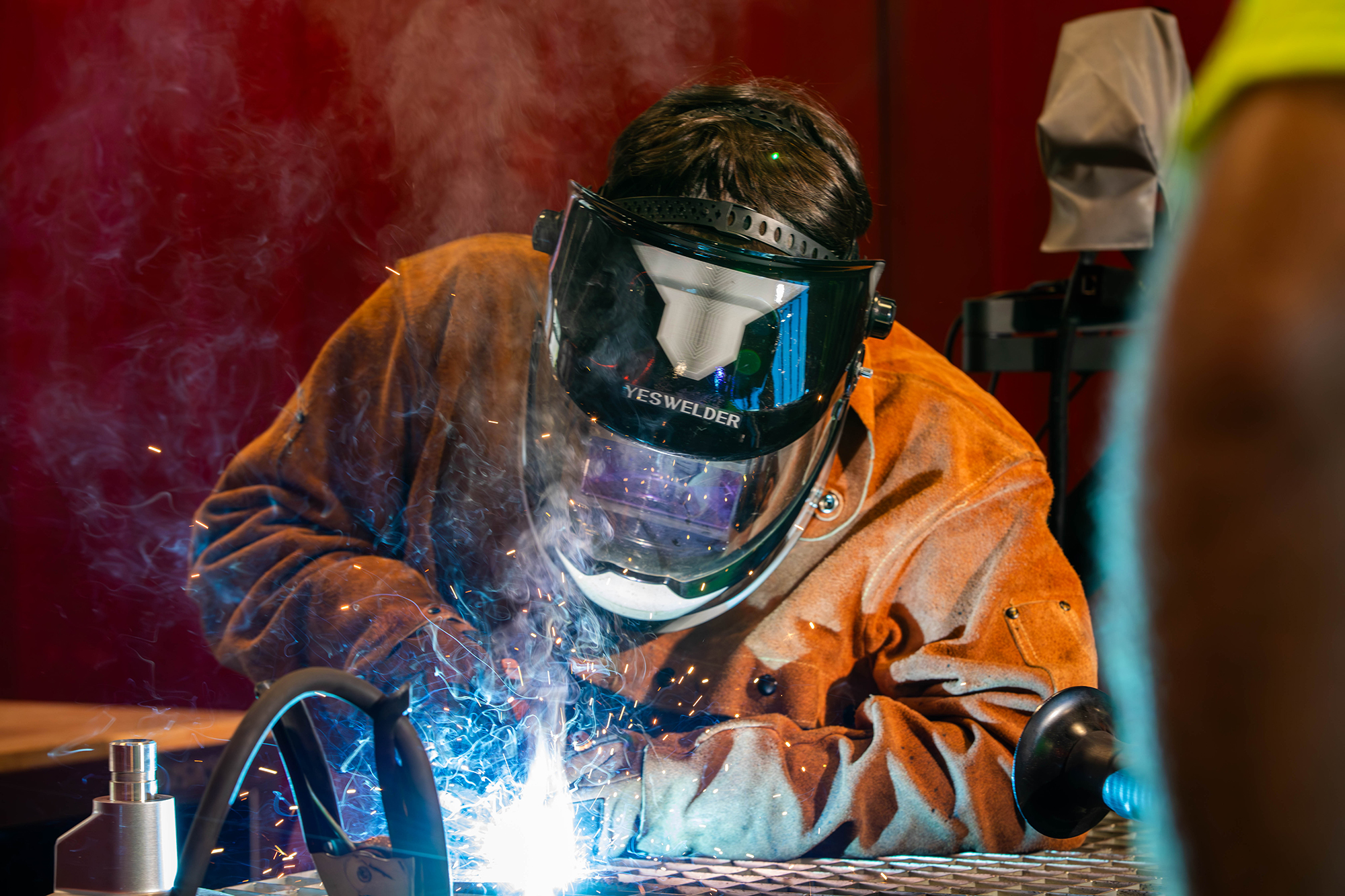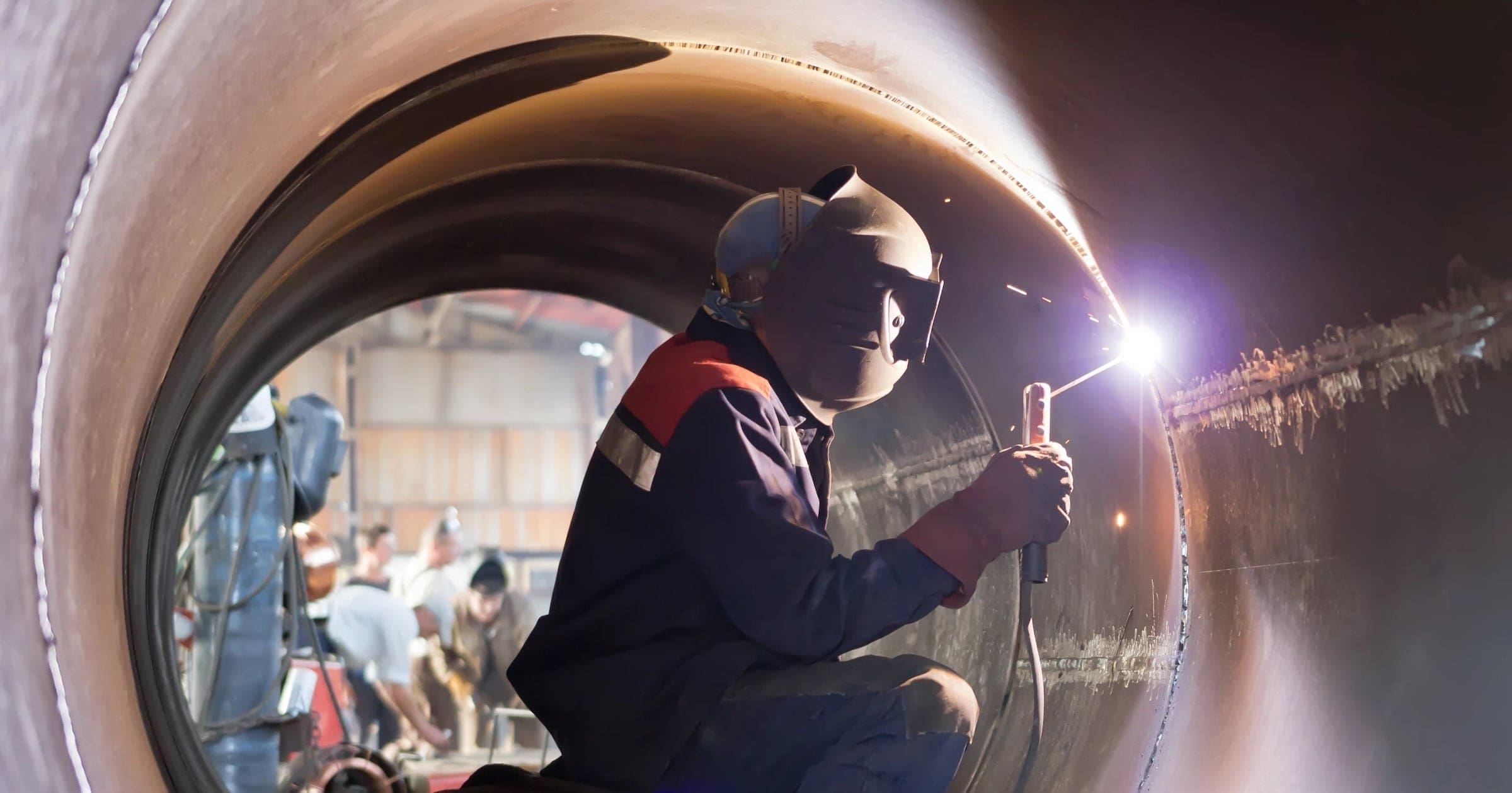Usual Welding Fixing Issues and How to Address Them Successfully
Welding repair work typically encounter a range of concerns that can jeopardize the stability of the end product. Common troubles include insufficient penetration, porosity, and imbalance, among others. Each defect offers special obstacles that call for specific methods for resolution. Recognizing these issues is essential for welders aiming to enhance their outcomes and skills. This conversation will certainly check out these usual welding repair work problems and effective techniques to address them.
Poor Penetration
Insufficient penetration takes place when the weld steel falls short to totally fuse with the base material, leading to weak joints and potential structural failures. This issue commonly stems from inadequate warm input, wrong electrode angle, or incorrect welding rate. Welders may experience inadequate infiltration because of a miscalculation of the needed parameters for a certain material thickness or kind. Furthermore, contamination on the base product's surface can impede effective bonding, exacerbating the issue. To deal with insufficient infiltration, welders ought to ensure proper settings on their equipment and preserve a clean work surface. Regular inspection of welds is recommended to determine any deficiencies early, enabling for timely improvements and the prevention of endangered structural stability in bonded settings up.
Porosity
Porosity is a common problem in welded joints that shows up as small gas bubbles caught within the weld steel. This flaw can endanger the stability of the weld, bring about reduced strength and prospective failing under stress and anxiety. Montana Mobile Welding and Repair. Porosity generally arises from contamination, wetness, or incorrect welding methods, which allow gases to get away right into the molten weld swimming pool. To address porosity, welders need to assure proper surface area preparation, keep a tidy workplace, and use ideal welding specifications. Additionally, picking the ideal filler product and protecting gas can mitigate gas entrapment. Normal examination and testing of welds can help determine porosity early, ensuring timely restorative activities are taken, thereby preserving the high quality and integrity of the welded structure
Misalignment
Misalignment in welding can occur from different aspects, including inappropriate setup and thermal growth. Comprehending the source is vital for efficient resolution. Several improvement strategies are readily available to straighten components and guarantee architectural stability.
Reasons for Misalignment
Welding misalignment often comes from a selection of underlying problems that can endanger architectural stability. One key reason is inappropriate fit-up of parts before welding, which can result in gaps and unequal surfaces. Variations in thermal development throughout the welding procedure can likewise lead to distortion, especially if the materials being signed up with have various coefficients of development. Additionally, poor securing and fixturing might fall short to hold elements safely in place, resulting in activity throughout welding. Improperly kept equipment, consisting of welding machines and devices, might present inconsistencies in the weld grain, additional adding to misalignment. Driver error, stemming from not enough training or experience, can likewise play a considerable role in developing misaligned welds.

Modification Methods Readily Available
Resolving imbalance properly requires a combination of rehabilitative methods customized to the details concerns available. One usual technique is the use of jigs or fixtures to hold parts in the correct placement throughout welding, making certain constant placement. In addition, pre-heating the products can assist lower distortion and enhance fit-up. For substantial imbalance, mechanical adjustment techniques, such as making use of hydraulic jacks or clamps, can be used to fix the placement before welding. Post-weld heat therapy may also be essential to soothe stresses triggered by misalignment. Cautious assessment and modification during the arrangement stage can prevent imbalance problems from ending up being significant issues, promoting a smoother welding process and improving general structural honesty.
Distortion
Distortion is a typical obstacle in welding that can emerge from numerous elements, including uneven heating and air conditioning. Understanding the reasons of distortion is vital for executing effective avoidance strategies. Resolving this concern not just boosts architectural integrity but additionally enhances the general quality of the weld.
Reasons of Distortion
When subjected to the intense warm of welding, products frequently go through modifications that can bring about distortion. This phenomenon primarily develops from thermal expansion and contraction throughout the welding procedure. As the weld area warms up, the material increases; upon cooling, it contracts, which can produce internal tensions. On top of that, unequal home heating across a work surface can aggravate these stress and anxieties, leading to warping or flexing. The sort of material likewise plays a substantial role; steels with differing thermal conductivity and coefficients of development might respond in a different way, leading to unpredictable distortions. Furthermore, inadequate joint layout and inadequate fixturing can contribute to misalignment throughout welding, increasing the possibility of distortion. Understanding these causes is necessary for reliable welding repair work and avoidance methods.
Avoidance Techniques
Effective prevention techniques for distortion throughout welding concentrate on regulating warm input and ensuring appropriate joint design. Preserving a consistent warmth input assists to minimize thermal growth and contraction, which can bring about distortion. Utilizing methods such as pre-heating the work surface can additionally minimize the temperature slope, promoting consistent heating. In addition, choosing proper joint designs, such as T-joints or lap joints, can improve security and reduce tension concentrations. Executing appropriate fixturing to secure the workpieces in position further aids in preserving placement throughout the welding process. Finally, staggered welding series can distribute warmth extra equally, protecting against localized distortion. By applying these techniques, welders can significantly decrease the possibility of distortion and enhance the overall high quality of their welds.
Splitting
Breaking is an usual issue run into in welding repair services, usually arising from various factors such as incorrect cooling rates, material option, or insufficient joint preparation. The event of cracks can substantially endanger the stability of the weld, resulting in prospective failings throughout dewalt welding table operation. To address this issue, welders should initially assess the origin triggers, ensuring that products are compatible and properly selected for the details application. Additionally, regulating the air conditioning price during the welding process is important; rapid air conditioning can generate stress and anxiety and result in cracking. Appropriate joint design and preparation also add to lessening the threat. Executing these methods can enhance weld quality and durability, inevitably lowering the possibility of breaking in completed weldments.

Insufficient Fusion
A substantial issue in welding repair work is incomplete blend, which takes place when the weld steel does not properly bond with the base material or previous weld passes - Montana Mobile Welding and Repair. This issue can result in weaknesses in the joint, potentially endangering the stability of the welded structure. Factors adding to incomplete blend include insufficient warm input, incorrect welding method, and contamination of the surface areas being joined. To address this concern efficiently, welders ought to assure correct pre-weld cleansing and surface prep work, along with readjust their welding specifications to achieve ample penetration and blend. Regular assessment throughout the welding procedure can also aid recognize insufficient blend early, enabling prompt rehabilitative procedures to enhance the total quality of the weld
Overheating
While welding repairs can improve architectural honesty, overheating presents a considerable obstacle that can result in material degradation. Excessive warm during welding can change the mechanical residential properties of metals, resulting in minimized strength, enhanced brittleness, and bending. This phenomenon is particularly vital in high-stress applications where architectural integrity is paramount. Determining overheating can include aesthetic inspections for discoloration or distortion, along with monitoring temperature level throughout the welding procedure. To mitigate the risks related to getting too hot, welders should use appropriate methods, such as managing warmth input, readjusting travel rate, and utilizing appropriate filler products. Furthermore, implementing pre- and post-weld heat therapies can assist recover material residential properties and enhance the total top quality of the repair, guaranteeing long-lasting performance and safety.
Often Asked Concerns
What Are the Common Indicators of a Welding Flaw?

How Can I Examine My Welds for Quality?
To check welds for high quality, one can utilize aesthetic examinations, ultrasonic screening, and radiographic methods. Each strategy assures architectural honesty, recognizes problems, and confirms adherence to specified criteria, eventually boosting the dependability of the welded joints.
What Safety Preventative Measures Should I Take While Welding?
When welding, one ought to focus on safety and security by wearing ideal personal safety tools, guaranteeing correct ventilation, protecting Our site flammable materials away, maintaining a tidy work area, and being aware of surroundings to stop injuries and mishaps.
Can I Fix a Weld Without Remodeling the Entire Joint?
Repairing a weld without remodeling the entire joint is feasible, depending on the damages (Montana Mobile Welding and Repair Fabrication). Techniques such as grinding, adding filler material, or making use of a welding process can successfully resolve specific defects while maintaining the surrounding framework
What Equipment Are Vital for Effective Welding Fixes?
Important devices for effective welding repairs consist of a welding machine, wire brush, grinder, protective gear, clamps, and filler materials. Each tool plays an important function in making certain quality and security during the fixing procedure. Porosity generally arises from contamination, dampness, or improper welding techniques, which permit gases to leave right into the molten weld swimming pool. Poorly maintained tools, including welding machines and devices, may introduce incongruities in the weld bead, more adding to imbalance. When subjected to the extreme heat of welding, materials typically undergo adjustments that can lead Related Site to distortion. Breaking is an usual issue experienced in welding repair services, often resulting from different elements such as inappropriate cooling prices, material choice, or insufficient joint prep work. A considerable issue in welding repairs is insufficient fusion, which occurs when the weld metal does not adequately bond with the base material or previous weld passes.